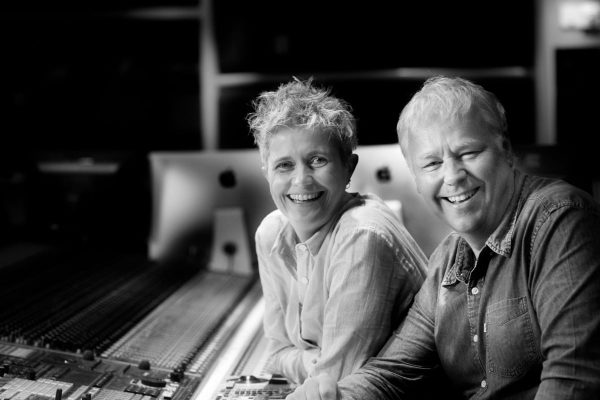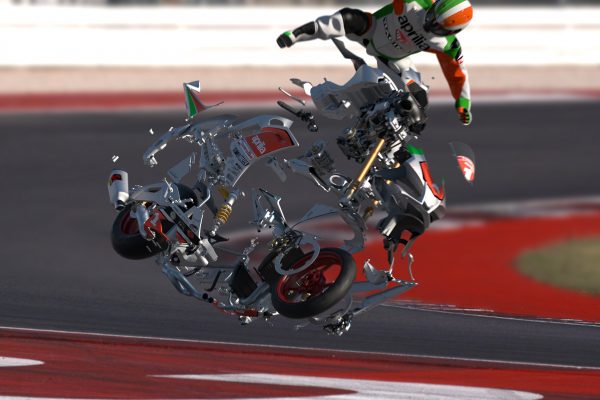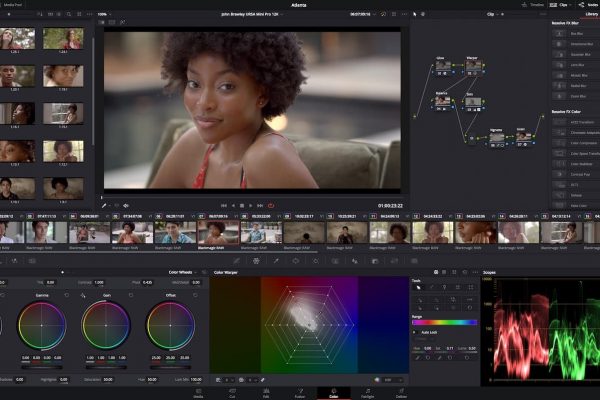One question that strikes cine-literate viewers during the awe-inspiring and terrifying exterior scenes of Alfonso Cuaron’s Gravity is how exactly they were done? Drew Turney speaks to the film’s production designer Andy Nicholson.
By Drew Turney
It’s all so realistic that you can easily picture stars Sandra Bullock and George Clooney suspended in a sound stage on wires and gimbals, with the Earth and spacecraft animated in later. In fact every scene of space exteriors in Gravity is CGI, the actor’s faces animated onto digital backgrounds of spacecraft, the bodies of the astronauts and the nearby Earth. So how does a production designer – a filmmaking craft traditionally concerned with overseeing the designing and building of props, sets and locations – deal with a CGI production?
A huge amount of preparation and trust, according to production designer Andy Nicholson. The British-born artist says he knew it would be radically different to every other movie because of the workflow between his department and the computer animators who’d put the exterior sequences together. “Instead of giving designs to draftsmen and construction teams, we’re giving it to 3D modellers, texture and lighting animators,” he says.
The process began with as much grounding in reality as Nicholson and his team could manage. Even though no real parachute, escape hatch or spacesuit helmet would appear on screen, the initial stages were all about collecting real materials in order to give animators the best possible reference about how certain surfaces would behave. “We put the word out to let us know about anything they were having trouble animating,” he says. “Because the modelling department was making principal interiors we could make a piece of a solar panel – we knew we could get a piece of what they’re made of and make a piece of one so the animators had the real thing and could see how it moved and reacted to light.”
Luckily a large amount of source material was already in the public domain, including very detailed images of the International Space Station. Materials to make pieces of spacecraft or equipment were sourced from everywhere, even enthusiast websites. Pieces of rubber from the shuttle’s tyres, spacesuit faceplates – it didn’t matter. Nicholson just knew it all had to be real.
The next step was designing each shot with director Alfonso Cuaron, which meant digitally sculpting people and spaceships and sending the final models to animators to add lighting effects, surfaces and every other aspect of falsified reality. Once the spatial arrangement of the shot had been figured out, the pre-visualisation sequence would assemble it into a rudimentary version of the final shot. Cuaron would then send notes back to Nicholson about anything from the location of a module on a ship or the number of hand holds for the digital actors to grab, to a hatch needing to be bigger or smaller to suit the story (the Russian Soyuz doesn’t actually have a hatch and window on the side as depicted in the film). Nicholson would rework the basic models to incorporate the changes and send it back to the animators, who’d jump back into Maya and Cinema4D to rework the pre-viz sequence. “We’d often go around five or six times tweaking a shot and sending it back,” he says.
As for the trust, the modelling and concepts from Nicholson’s team were all undertaken in early-stage production with most of the animating done in the months after their part in Gravity was already over, so everything sent to the animators had to be rock-solid.






